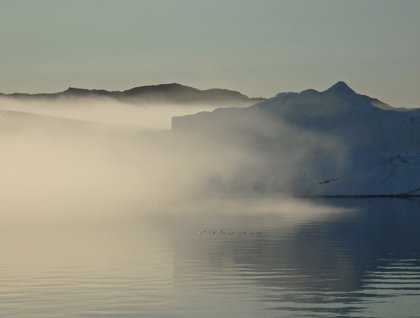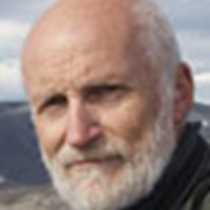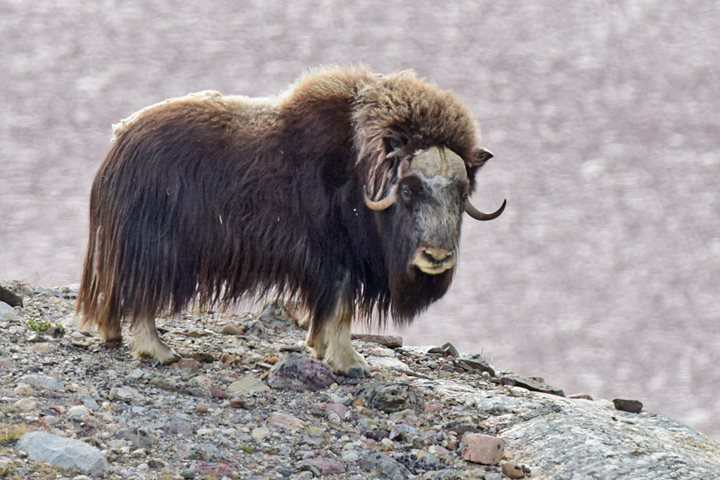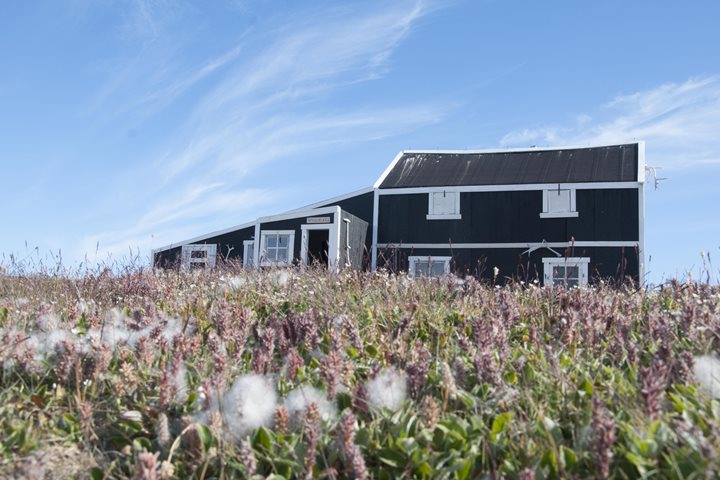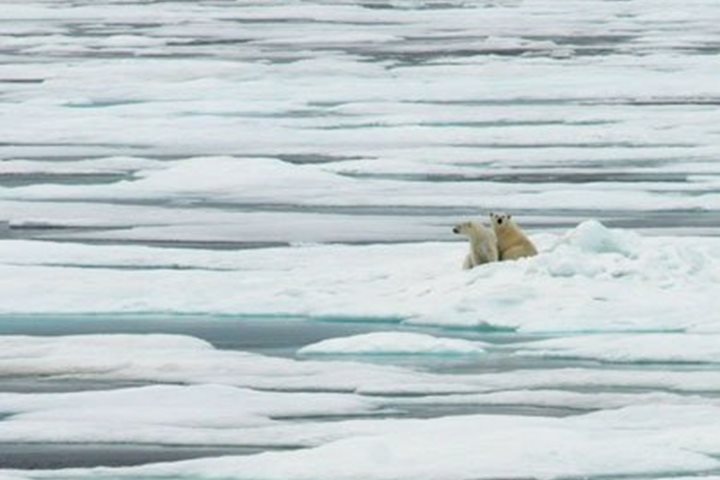In the very early and nebulous morning we passed Whalefish Islands (also known as Kitsissut) where, in July 1845, HMS Terror and HMS Erebus made their last stop before they ventured into the unknown with John Franklin and his 148 men aboard to find the Northwest Passage. During the days at anchor here, the crews made the last necessary arrangements for the voyage ahead and they also sent letters home to their families and sweethearts. Little did these brave men know that their expedition would become the biggest tragedy in Arctic exploration history.
Our gallant ship weaved her way between the multitude of ice as the sun lifted the fog and bathed the calm sea and the icebergs in an enchanting light. A wonderful pre-breakfast experience. What a great way to begin any day! We are in Disko Bay and the destination for our last day in Greenland is the town of Ilulissat and the Ilulissat Icefjord.
Icebergs are at the top of the agenda today. ”Ilulissat” is Greenlandic for ”icebergs” and as we approach it becomes crystal clear that the town is very appropriately named. Icebergs everywhere! The glacier that releases all these giants is the most productive of all glaciers. The glacier front moves ahead 45 meters (150 feet) every 24 hours and the 4000 icebergs discharged during a year amount to a stunning 45 km3 (11 cubic miles) of ice, enough to cover the annual freshwater consumption of the entire USA. Since 2004, this magnificent icefjord has been a UNESCO World Heritage Site.
The administrative center in Greenland’s northernmost municipality (with an area equivalent to that of Texas, but with only 17,000 inhabitants), Ilulissat is a charming and busy town situated at the mouth of the icefjord just where the icebergs get stranded on 250 meters (800 feet) of water. Local people do a lot of Greenland halibut fishing and shrimping but in recent years ice tourism has become the biggest activity in town.
Numerous tourists and many delegations of politicians and other decision-makers from all over the world have visited Ilulissat to witness the impact of climate change accelerating the melt-off from Greenland’s ice sheet and the increased iceberg discharge by the glacier. Ilulissat has certainly made a lasting impression on the world outside Greenland.
The morning and afternoon were spent walking to the archaeological site Sermermiut at the edge of the icefjord and sailing in local tour boats among the ice-cold giants. Some opted for the aerial sightseeing in order to cover the complete scenery from above.
We had a long day here experiencing and exploring the local culture and the breathtaking icescapes. Many of us also visited the local museum in the house where the famous Arctic explorer and anthropologist Knud Rasmussen (1879-1933) was born and spent his boyhood. Rasmussen made several daring expeditions in the Arctic, the longest being the one from Greenland to Siberia (1921-25) when he and his two Inuit companions were the first to travel the entire Northwest Passage using dog sleds. John Franklin and Knud Rasmussen represented two very different ways of exploring the Arctic. Rasmussen’s approach was the Inuit way – and he was successful.
The town has 4600 human inhabitants and 7000 sled dogs. The latter are parked for the summer in large P-lots where they are idleing, chained up with their team mates, and dreaming of winter. As Knud Rasmussen said: ”Give me snow, give me dogs – and you can keep the rest.”
With this in mind, we waved goodbye to the iceberg capital of the world, and as dinner was served National Geographic Explorer headed west towards Nunavut for more adventures and exploring!

